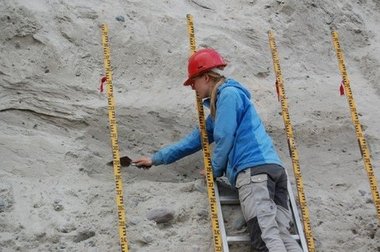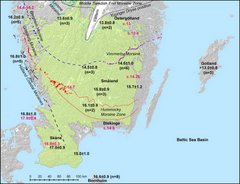Research > Ice free conditions in west-central Sweden in the middle of the last ice age
Ice free conditions in central Sweden in the middle of the last ice age

Fieldwork close to Idre
During my master's thesis I studied a gravel pit close to Idre in northern Dalarna.
There sediments deposited when the area was ice-free had been preserved despite a later
glaciation. OSL dating of the sediments suggested that the area was ice-free at some
point between 50 and 40 thousand years ago, in the middle of the Weichselian ice age.
Indications of ice-free periods of approximately this age are known from several sites in
north Europe and indicate that the Fennoscandian ice sheet was periodically substantially reduced.
We have also studied this period, called Marine Isotope Stage 3 or MIS 3, in the Baltic Sea.
A more general discussion about MIS 3 in Scandinavia is available in this blog post by Barbara Wohlfarth.
Read more
Sediment cores reveal the ice age history of the Baltic Sea
Investigations of sediment cores from Kriegers Flak in the southern Baltic Sea reveal the deveolpment of the region
during the last 55 thousand years. It is a dynamic history with repeated glaciations but also periods with brackish
conditions and periods when parts of the current Baltic Sea were dry land.
Read more.
 New deglaciation chronology for south Sweden
New deglaciation chronology for south Sweden
In this study we present new age constraints for the deglaciation of southern Sweden based on cosmogenic surface exposure dating.
We also provide a map with suggested deglaciation ages based on the new data and selected existing dates from the region.
Read more.
 Research expedition to Taymyr
Research expedition to Taymyr
During the summer of 2012 I participated in a seven week long expedition to Taymyr. The aim of the expedition was to
date the glaciations in the region. We therefore travelled in zodiacs along the Luktakh, Upper Taymyr and Logata rivers,
a total distance of almost 350 km.
Read more.
Back to the research overview

